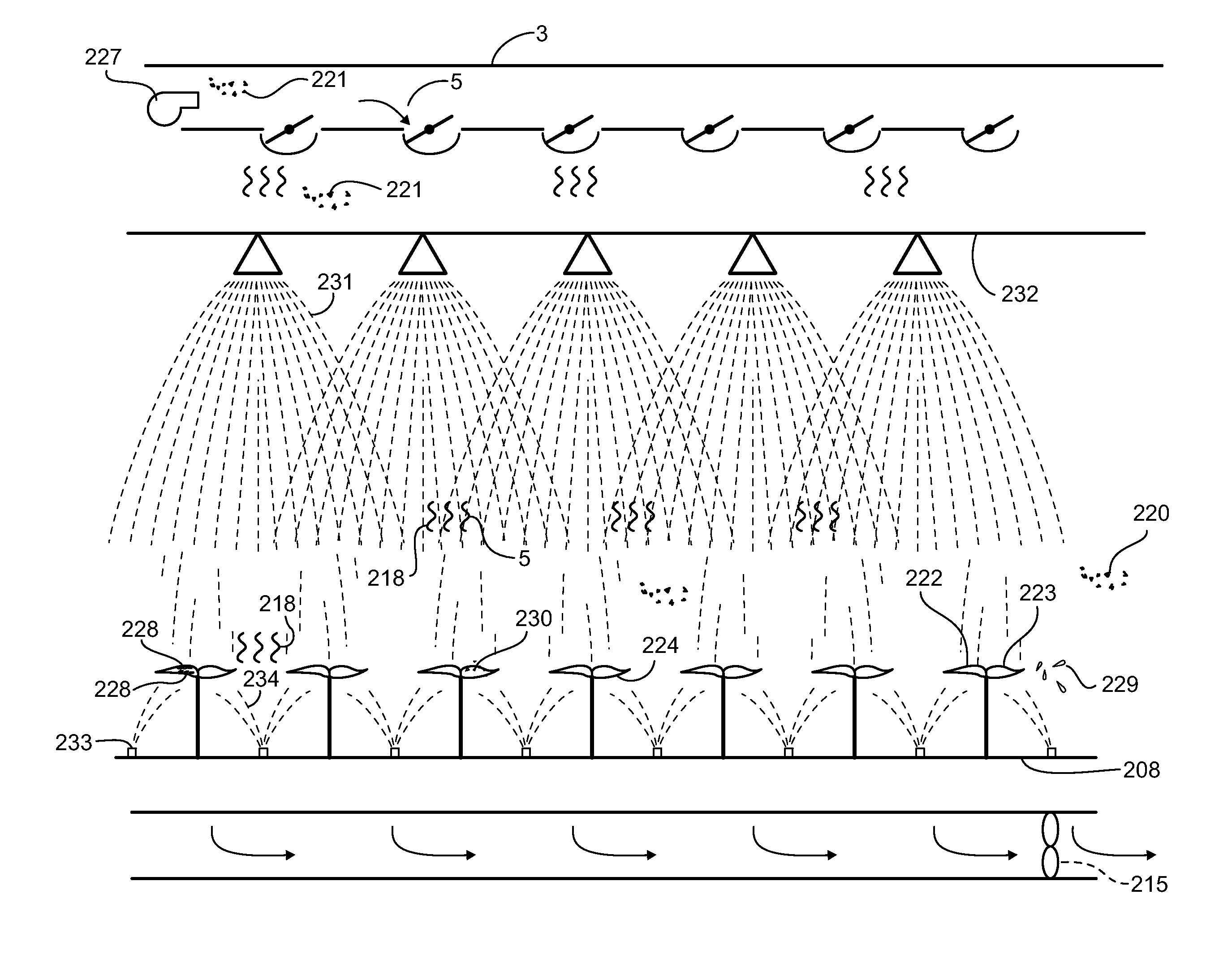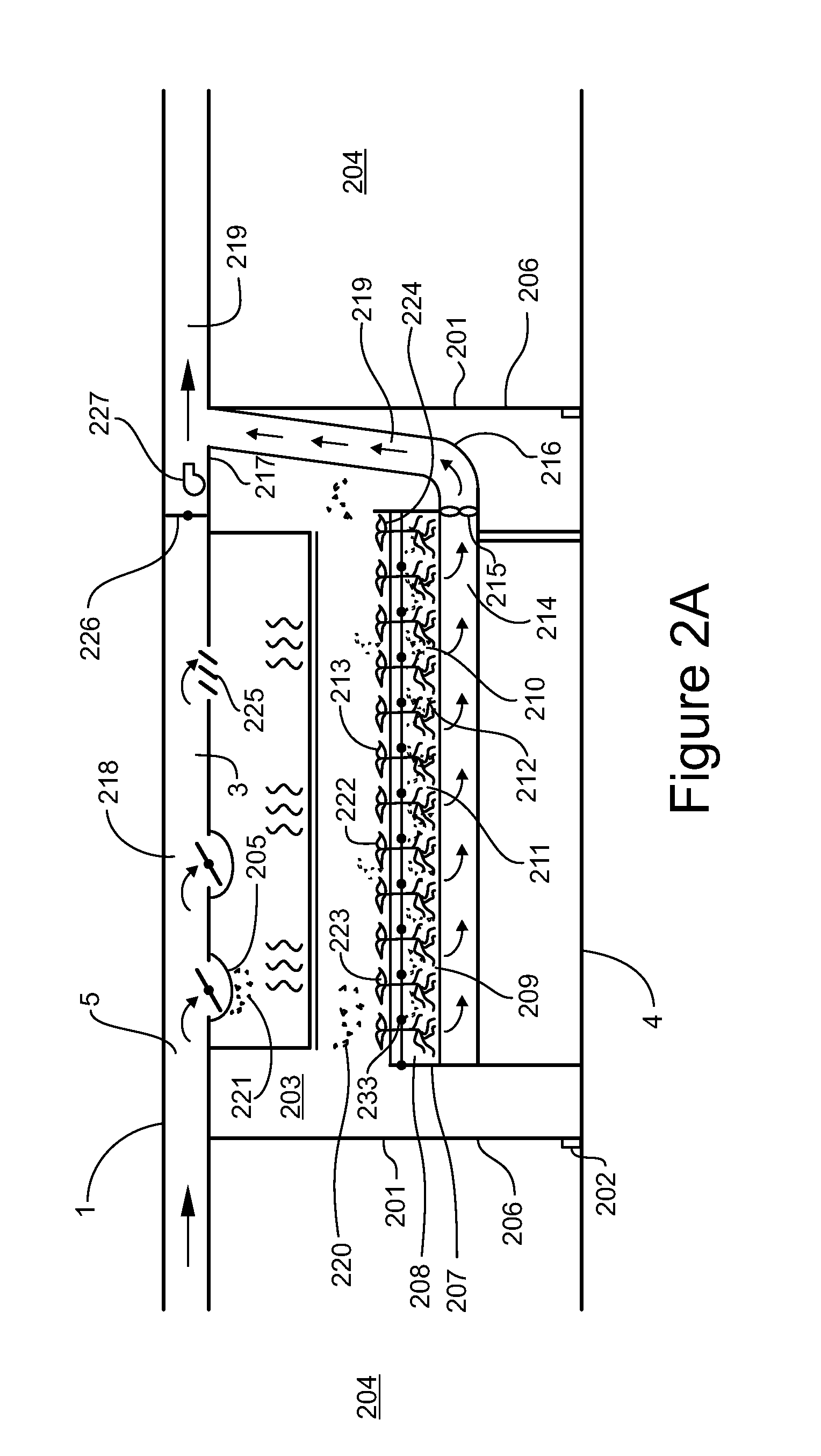Plant Air Purification Enclosure Apparatus and Method
a technology for air purification enclosures and plants, applied in the direction of heating types, cleaning with liquids, separation processes, etc., can solve the problem of poor indoor quality of the pape enclosure itsel
- Summary
- Abstract
- Description
- Claims
- Application Information
AI Technical Summary
Benefits of technology
Problems solved by technology
Method used
Image
Examples
third embodiment
[0214]the invention increases humidity by having the furnace, heating coil or cooling coil of the HVAC upstream of the plant air purifier enclosure.
fourth embodiment
[0215]Lastly the invention increases humidity by increasing the percentage of overall air going through the filter bed.
[0216]Tests conducted at Syracuse University in 2008 at the Center of Excellence which were funded both by NYSERDA and the EPA found that when air was passed through a plant air purifier, the amount of relative humidity increases by 15.8%. However since only 1 / 14 of the total air supply passed through the filter bed the total increase in overall relative humidity for the building's total air supply came to only 1.82%. To increase humidity in the air in the conditioned space all that is necessary is to increase the percentage of overall air going through the filter bed, or to have the furnace, or heating coil and the cooling coil of the HVAC stationed upstream of the plant air purifier enclosure.
[0217]A second method is simply to place the plant air purification enclosure upstream of a location where the air coming out of the enclosure will be cooled either by a dehu...
PUM
 Login to View More
Login to View More Abstract
Description
Claims
Application Information
 Login to View More
Login to View More - R&D
- Intellectual Property
- Life Sciences
- Materials
- Tech Scout
- Unparalleled Data Quality
- Higher Quality Content
- 60% Fewer Hallucinations
Browse by: Latest US Patents, China's latest patents, Technical Efficacy Thesaurus, Application Domain, Technology Topic, Popular Technical Reports.
© 2025 PatSnap. All rights reserved.Legal|Privacy policy|Modern Slavery Act Transparency Statement|Sitemap|About US| Contact US: help@patsnap.com



